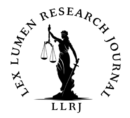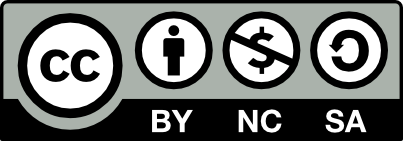Written by Ashwin Nair,
Intern-Lex Lumen Research Journal,
June 2025
Introduction
Insider trading involves transactions in securities made using sensitive, non-public information. It crosses into illegality when individuals use privileged data for personal benefit, thereby breaching their fiduciary responsibilities and compromising market fairness. Not all insider trades are illicit, those based on public information and properly disclosed to the Securities and Exchange Commission (SEC) are legally allowed. However, the lack of a clear and comprehensive legal definition of insider trading continues to pose difficulties in enforcement, leaving room for interpretation and potential exploitation of legal gaps.
A major contributor to the challenges in regulating insider trading is the prevalence of information asymmetry. Within organizations, those in positions of authority often possess knowledge that is not shared with subordinates or external parties. This imbalance can lead to subtle forms of manipulation, for example, a manager may promote or downplay a project’s prospects to influence decisions, or startup founders may overstate the potential of a venture to secure investment. Such conduct, while not always illegal, raises serious ethical issues and can distort decision-making processes and investor confidence.
Research into insider transactions has revealed consistent patterns of financial outperformance among those with privileged access. An analysis of over 2.5 million SEC-reported trades from 1987 to 2019 shows that insiders routinely outperform the broader market[1]. Multinational company insiders, in particular, earned an average of 2.8% in the month after buying stock, higher than the 2.4% seen in domestic firms and well above the average market return of 0.9%. Executives with deeper insight into company operations did even better, earning returns as high as 3.6% monthly[2]. These findings illustrate the significant advantage insiders possess and point to the urgent need for more robust legal oversight to ensure fairness in financial markets.
Insider Trading: Then vs. Now
Insider trading has long lacked a precise statutory definition under U.S. federal law. Instead, its meaning has been shaped through case law, with courts interpreting its scope over time. While the Securities Exchange Act of 1934 laid the foundation for regulating such conduct, especially through Section 10(b) and Rule 10b-5, the term “insider trading” remains primarily judicially constructed[3]. The seminal 1968 Texas Gulf Sulphur case introduced the “disclose or abstain” principle, requiring those with material non-public information to either disclose it or refrain from trading. The understanding of insider trading has continued to evolve through legal precedents and regulatory measures, rather than a singular comprehensive statutory definition.
Over the years, the legal structure governing insider trading has been reinforced by legislation like the Sarbanes-Oxley Act (2002) and Dodd-Frank Act (2010), which increased corporate accountability and whistleblower protections. The courts have also played a central role in broadening enforcement mechanisms. The “misappropriation theory” established in U.S. v. O’Hagan (1997) extended liability to individuals who misuse confidential information obtained from someone to whom they owe a duty of trust. The Supreme Court’s ruling in Salman v. United States (2016) further expanded liability by recognizing that tipping confidential information to friends or relatives without direct compensation can still imply personal benefit and constitute a violation.
The history of insider trading is marked by several prominent cases. Early figures like William Duer and Albert Wiggin exploited privileged information for personal gain in eras lacking specific prohibitions. The Pecora Hearings of the 1930s exposed such actions, catalysing the passage of the Securities Exchange Act. In the late 20th century, high-profile offenders such as Ivan Boesky and R. Foster Winans attracted widespread attention. More recent cases, including those of Martha Stewart, Raj Rajaratnam, and Mathew Martoma, highlighted the growing scale and complexity of insider trading offenses.
Information Asymmetry in the Digital Age
The digital era has reshaped how information asymmetry affects financial markets, broadening the scope of insider trading. Previously, insiders with direct organizational ties exploited confidential information, but now even external actors like hackers are leveraging digital vulnerabilities to gain market-sensitive data. Technology has democratized access to information but also created new disparities, as some individuals still possess an edge in interpreting complex regulations or accessing undisclosed data. For instance, insiders with advanced knowledge of intricate laws like the Tax Cuts and Jobs Act (2017) have been shown to profit more, particularly when analysts find such rules difficult to interpret. Moreover, digital transformations within corporations have increased opportunistic trading, especially in firms with weak governance and high information asymmetry.
Regulatory bodies face ongoing challenges in adapting to rapid technological and market changes. Despite deploying surveillance systems and AI tools, agencies like SEBI and the SEC struggle with delayed reporting, ambiguous definitions, and limited cross-border enforcement capabilities. The “shadow trading” case against Matthew Panuwat exemplifies how legal boundaries are being stretched to cover trades in comparable companies based on confidential information[4]. Misuse of government data for personal gain has similarly been treated as akin to private-sector insider trading. High-profile examples, such as the Enron scandal and the Ivan Boesky case, demonstrate the severe consequences of unchecked insider activity.
Are the Laws Outdated? A Critical Evaluation
Insider trading laws have long been criticized for their lack of precision and outdated nature, especially given the rapid evolution of financial markets and technological tools. Unlike other legal domains with clearly codified rules, insider trading primarily in jurisdiction of United States relies on judicial interpretations of Section 10(b) of the Securities Exchange Act and SEC Rule 10b-5, resulting in a complex and often inconsistent body of case law. This approach, favouring flexibility over clarity, has created confusion among market participants and frustrated regulators who depend on “regulation by enforcement.” The absence of a statutory definition not only complicates the compliance but also hinders prosecution, as proving insider trading frequently depends on circumstantial evidence and navigating complicated legal standards like the “personal benefit” requirement. High-profile cases, such as United States v. Newman, have further constrained enforcement by making it difficult to prosecute downstream tippees[5]. Although legislative initiatives like the Insider Trading Prohibition Act (ITPA) attempt to shift focus to the wrongful acquisition and use of information, the core ambiguity in the definition of “wrongful” continues to be a major obstacle.
Enforcement challenges are further compounded by advancements in digital technologies that both obscure and facilitate insider trading. Additionally, novel trading strategies such as “shadow trading” have emerged, where insiders trade in one company based on material non-public information about another, economically linked firm. This theory, upheld in the SEC v. Panuwat case, broadens insider trading liability to encompass indirect trading activities, igniting debates about the limits of current legal theories. Critics argue that these judicially developed doctrines, often seen as “regulation-through-litigation,” stretch existing legal frameworks too far without legislative grounding. Parallel concerns have arisen around the misuse of confidential government data, with courts treating such conduct as akin to private-sector insider trading under property law principles.
Recognizing the inadequacy of judge-made doctrines, legislative bodies have repeatedly attempted to modernize insider trading law. Recent proposals, including those from a SEC-sponsored Task Force and House bills in 2019 and 2021, aim to establish clearer statutory rules focused on prohibiting the use of improperly obtained or misused information. Yet, the concept of “wrongful” trading remains contentious, reflecting deeper tensions between different fairness paradigms one emphasizing exclusive control over information and another advocating for a level playing field for all investors.
Proposed Reforms and Global Best Practices
To modernize insider trading laws and close existing enforcement gaps, U.S. lawmakers and regulators have introduced several significant reforms. Notably, the Eliminating Executive Branch Insider Trading Act of 2023 proposes restricting executive officials from trading individual stocks, limiting them to safer investments like diversified funds or U.S[6]. Treasury securities. Additionally, the Insider Trading Prohibition Act (ITPA), passed by the House in previous years, seeks to simplify prosecution by removing the need to prove personal benefit in tippee cases, focusing instead on whether the recipient knew the information was improperly obtained[7] . The 2012 STOCK Act, which mandates prompt stock trade disclosures by members of Congress, has faced criticism for ineffective enforcement and negligible penalties. Despite these issues, public support remains strong for stricter stock trading limitations on lawmakers. Meanwhile, the SEC has strengthened its oversight role, introducing rules to improve transparency around insider trading policies, including new disclosure mandates that take effect in 2025. These require companies to confirm whether such policies exist and file them with annual reports, enhancing public and regulatory scrutiny.
Around the world, firms are enhancing their defences against insider trading by cultivating strong internal cultures of compliance and embracing regulatory technology (RegTech). A culture of compliance starts with leadership promoting ethical behaviour and continues with practices like integrating compliance into employee evaluations, conducting cultural assessments, and encouraging open discussions about confidentiality within households, especially in remote work settings. In parallel, companies are leveraging RegTech tools to monitor trading activity, automate compliance procedures, and maintain accurate records. These tools not only help firms meet regulatory requirements but also detect advanced forms of misconduct, such as “shadow trading,” where insiders exploit material non-public information (MNPI) from their own company to trade in related firms’ stocks[8]. As regulators like the SEC employ sophisticated data analytics tools, companies are increasingly expected to adopt similar systems to remain compliant and mitigate enforcement risk.
Companies are urged to regularly update and reinforce their insider trading policies to reflect legal and operational changes. Effective programs typically include prohibitions on trading during earnings-related blackout periods, require preclearance for trades by top executives, and restrict high-risk practices like hedging or pledging company shares. Many firms also address the handling of securities gifts and encourage the use of 10b5-1 trading plans, which allow for pre-scheduled trading and reduce exposure to insider trading allegations[9]. However, recent SEC reforms to these plans necessitate greater oversight and approval mechanisms. Comprehensive training preferably live and interactive is vital for raising awareness and adapting to evolving legal standards.
[1] Stephen Kim, A Brief Look Into Dated Insider Trading Laws, (Aug. 13, 2019).
[2] Aswath Damodaran, Historical Returns on Stocks, Bonds and Bills: 1928-2024 (2025), https://pages.stern.nyu.edu/~adamodar/New_Home_Page/data.html.
[3] Stephen Kim, supra note 2.
[4] J.W. Verret & Greg Lawrence, Introduction to SEC v. Panuwat: Understanding “Shadow” Insider Trading, (Apr. 29, 2024).
[5] Daniel M. Wiesenfeld, The Evolution of Insider Trading, N.Y.U. Journal of Legislation & Public Policy.
[6] Sen. Hawley, Josh [R-MO], Eliminating Executive Branch Insider Trading Act, (2023).
[7] Congress and the Insider Trading Prohibition Act: “Can’t Anybody Here Play This Game?, Congress and the Insider Trading Prohibition Act: “Can’t Anybody Here Play This Game?, (May 25, 2021).
[8] Alejandro Soto, Best Practices for Corporate Executives to Avoid Insider Trading Accusations, (Feb. 24, 2025).
[9] Implementing 10b5-1 Trading Plans After SEC Amendments and Peizer – July 2024, Business Litigation Reports (Jul. 29, 2024).


